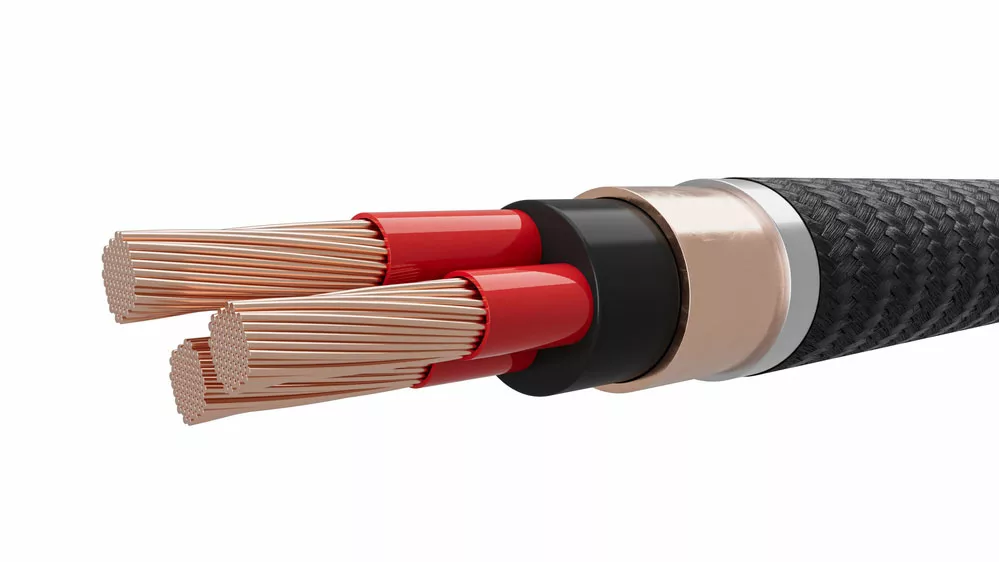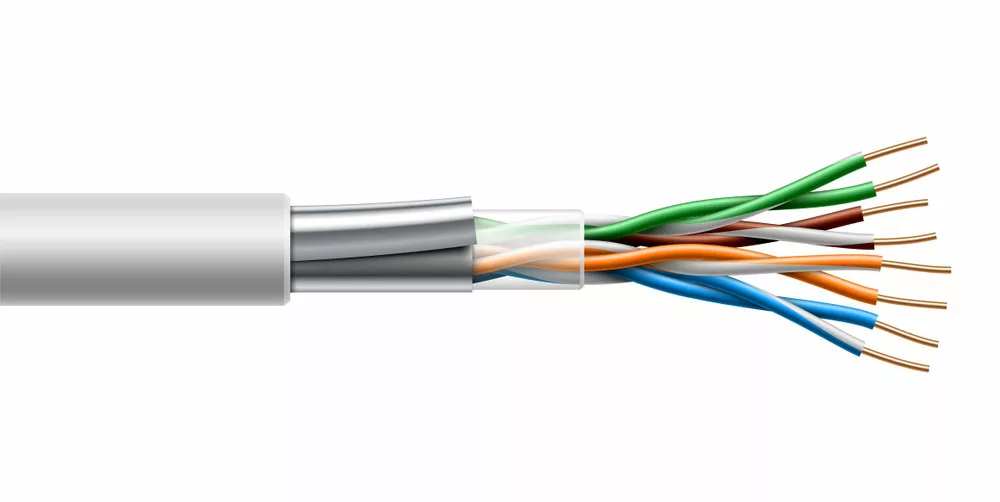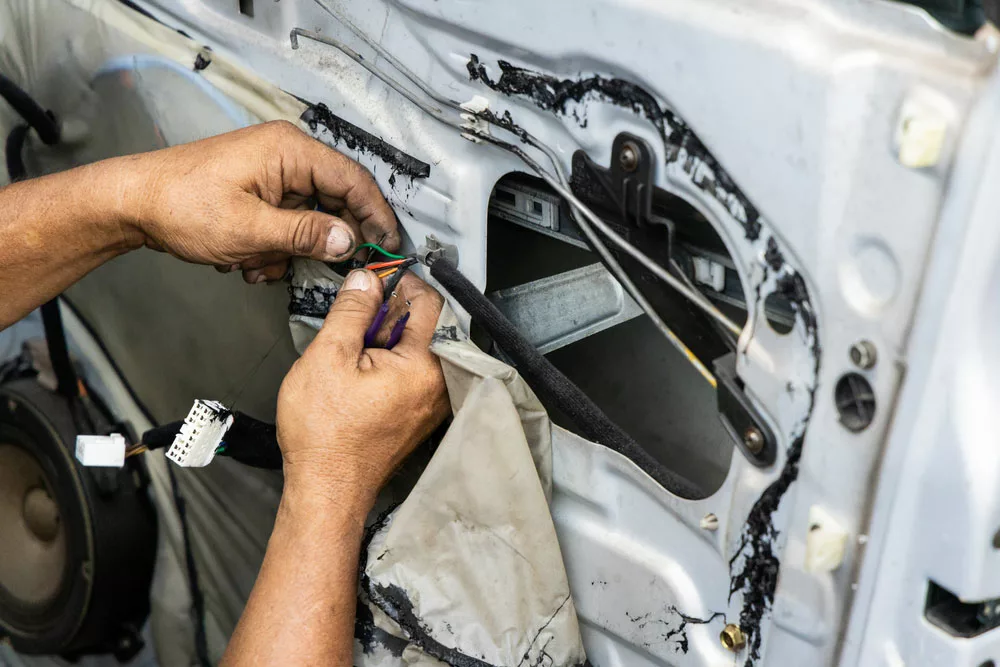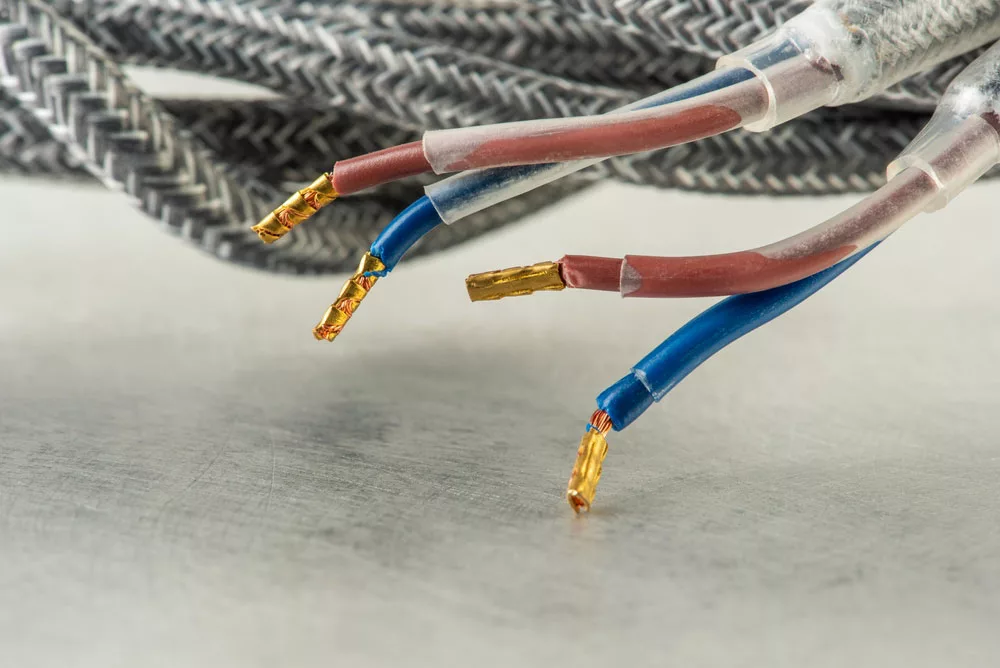About stranded wire cable, You hardly notice the importance of good wiring until you have a disconnection. Did you know the type of wiring is just as important as the quality of wire in electrical applications?
Most of your home appliances have a stranded wire cable. This guide dives into the types of wires and where they apply best.
Table of Contents
- What is a Stranded Wire Cable?
- What is Solid Wire?
- What is Stranded Coaxial Cable?
- Stranded vs. Solid Wires: The Key Differences
- Stranded Cable Pros and Applications
- Solid Wire Pros and Applications
- Stranded Wire vs. Wire Braids
- Which is Better Solid Wire Or Stranded Wire?
- In Closing
What is a Stranded Wire Cable?

Stranded copper wire cable
A stranded wire cable is a complete unit of individual wires that form a bundle. The strands have a non-conductive cover that protects the wires and reduces the chances of accidental shock. The bundle and protective cover form the complete cable.
Most stranded wire cables indicate the number of strands in the cable and the gauge of the individual wires. The strand and gauge count appear in A x B or A/B fashion. The A indicates the number of wires, while the B indicates the wire gauge.
What is Solid Wire?

Solid wire cable with a protective covering
Solid wire has one conductor wire with non-conductor insulation. A single gauge number denotes the size of the conductor wire. It’s normal to see numbers such as 24AWG.
You can have multiple units of solid wire in one cable.
What is Stranded Coaxial Cable?
Coaxial cables consist of a conductor core, a conductor cover, a woven copper sheath, and a plastic cover. Stranded coaxial cables are just one of the few designs that you may find. You can also find solid coaxial cables.
Stranded coaxial cables feature heavily in transmission lines. These cables are preferable over solid coaxial cables for their flexibility.
Stranded vs. Solid Wires: The Key Differences
Stranded and solid wires are not interchangeable. Their differences make each ideal for specific applications. Here’s a summarized table.
| Stranded wire | Solid wire |
| Stranded wire is more flexible hence less prone to breakage from repetitive movement. | Solid wire is rigid and will break if subjected to frequent repetitive motion. |
| Stranded wire doesn’t split easily. | Solid wire is built to retain strength in hostile environments |
| Stranded wires have a less current carrying capacity. | Solid wires carry more current than stranded wire cables. |
| It features multiple thin conducting wires. | Solid wire consists of a single thick conductor wire. |
| Stranded wire cables have higher electrical resistance. | Solid wires have lower electrical resistance. |
| Cost relatively more to produce due to complex manufacturing. | Less cost of production |
| Better suited to carrying power over shorter distances | Carry power over long distances with minimum voltage drop |
| Has a reduction in signal transmission (attenuation) of between 20% and 50% hence producing more noise | Produces less noise due to less reduction in signal transmission |
Stranded Cable Pros and Applications
- The main advantage of stranded wire cables is their flexibility. Their flexibility makes them most functional for everyday electrical equipment and applications. You’ll find stranded wire in car doors and robotics.

Mechanic fixing wiring problem in a car door
- Stranded wire cables are malleable. Malleability is a great advantage in building indoor appliances such as speaker wires and household appliances.
- Stranded wire is easy to install in tight corners. Builders can use stranded wire for internal wiring where the cables are less exposed to natural elements. Also, repairs will be easier when there are wire disconnections.
Solid Wire Pros and Applications
- Solid wire has more corrosion resistance. It’s a great fit for outdoor applications and vehicle wiring.
- Since the solid wire is so sturdy, you can use it in commercial and residential infrastructure.
- Solid wire’s minimal noise makes it useful for connecting internal building components such as security cameras.
- Solid wire features in home wiring inside main panels. 120/240v main panels need shorter wires to connect. Solid wire maintains its shape, although you might need to use strain relief to reduce the chances of breaking.
Stranded Wire vs. Wire Braids

Braided wire with a protective covering
As discussed above, stranded wire is multiple thin wires twisted and joined to make a complete cable. The stranded wire might have PVC encasing around it to maintain structural integrity and reduce accidental shock.
However, wire braids are multiple flexible wires weaved into several independent units. These wire braids may have shielding around them. Additionally, they may have protective braided wire mesh around them to improve wire functionality.
Braided wire reduces interference from electromagnetic(EMI) signals. Moreover, it boosts the mechanical strength of the cable.
Braiding machines typically braid the wires. It’s common to see wire braids labeled with three numbers, for example, 24-4-36. Twenty-four stands for the number of carriers, 4 is how many wires are in the carrier, and 36 indicates the gauge of each wire.
Still, braided wire adds a cost to manufacturing. Their complex production makes them costly to produce. They are also bulky, making them impractical for tight-fit spaces. Looking at other alternatives before settling on the braided wire is best.
Which is Better Solid Wire Or Stranded Wire?
Stranded wire outperforms solid wire if you aim for applications requiring flexibility, frequent motion, and short distances.
Solid wire is better in applications that need long distances, less cost implication, and direct contact with external environmental conditions.
Choosing the better wire between solid and stranded is a matter of application. It would be best if you looked at these factors before picking either.
- Amperage
- Cost
- Flexibility
- Frequency of motion
- Durability
- Environmental conditions
In Closing
Different projects have different wiring needs. The key to durable, practical, and effective wiring is knowing the types of cable that fit your project. This guide shows you which wire fits your requirements.
